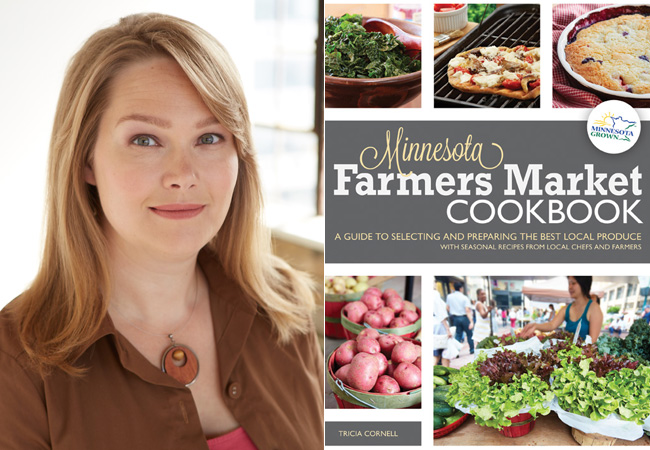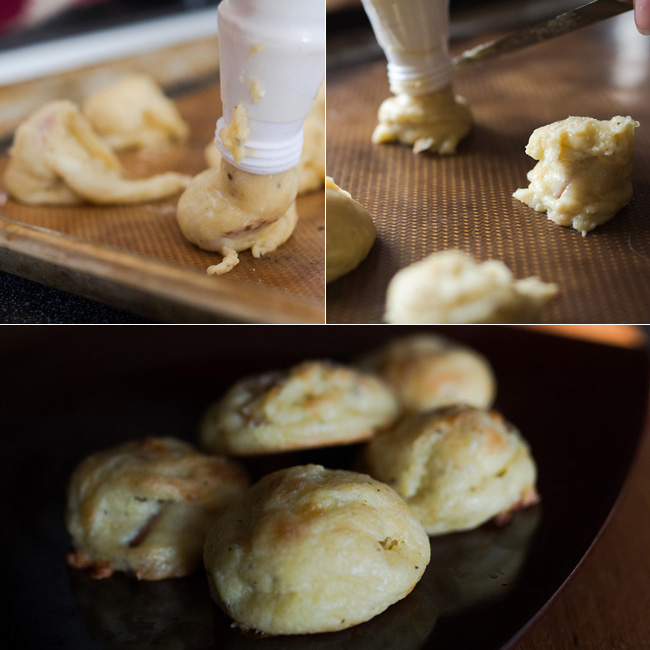
The rising tide of the local food movement has renewed interest in the farmers market, an ancient institution that at one point seemed doomed by the industrial-powered glory of the modern supermarket. Between 2002 and 2013 in Minnesota, we’ve seen the number of markets explode from 45 to more than 150. They’re scattered throughout the state, in the urban centers of Minneapolis and St. Paul, in suburban parking lots, and in the town squares of places as geographically diverse as Crookston, Lanesboro, and Ely.
“There are farmers markets absolutely everywhere,” says Tricia Cornell, author of the newly released Minnesota Farmers Market Cookbook: A Guide to Selecting and Preparing the Best Local Produce with Seasonal Recipes from Local Chefs and Farmers (Voyageur Press, 2014). “It’s become a more normalized way to shop. And if I had my druthers, people would treat their farmers market more like they treat their grocery store. And right now, a lot of people treat it like their Saturday morning entertainment — which is cool, but it’s less sustainable for the farmers.”
Cornell is a regular contributor to the Heavy Table and the author of Eat More Vegetables: Making the Most of Your Seasonal Produce (Minnesota Historical Society Press, 2012). She brings an expert’s eye to the seasonally driven tornado of produce available at farmers markets from spring through late autumn.
“I think a lot of people go to the farmers market wander around and see what looks good, as opposed to the grocery store, where you may say, ‘I’m going to the familiar green beans,'” says Cornell. “When you go to the farmers market, you’re open to more things. And there’s a seasonality to the food, so the farmers market makes you pay attention to something other than the changing color of the leaves when it comes to seasonality.
The book works as a collection of recipes springboarding off of Minnesota’s seasonal bounty, but it goes deeper than that, framing the conversation about food that all of us, knowingly or not, initiate when we shop at farmers markets for our dinner. “In each section I include a list of things to ask your farmer about. You can’t necessarily assume that everything’s organic, for example,” says Cornell. “But you can go up and have a conversation: ‘You organic? Why not?’ And you might find out that they believe in organic principles but they can’t afford certification. And you can find out how people raise their chickens, and where their sheep live, and where their trout come from, things like that.”
The book itself is lovingly comprehensive, including an alphabetical tour of the produce and other food you’ll find (from apples to zucchini), a guide to more than 150 local farmers markets, and more than 80 recipes from local luminaries including Andrew Zimmern, Stewart Woodman, Sue Zelickson, Steven Brown, and more.
“We have a bunch of recipes from Lenny Russo [of St. Paul’s Farmers’ Market-driven Heartland], and it’s not about fancy techniques so much as the flavor combinations,” says Cornell. “One is a corn relish. It’s got rosemary, and it’s got too different kinds of oil in there, and it turns out the walnut oil makes a real difference. And it’s exactly the right flavor profile. You could experiment all you want at home, but Lenny Russo’s figured it out.
The book’s photos, taken by Paul Markert, are bright and inviting without feeling staged or overproduced — they’ve got a natural feeling to them, perfect for the subject matter and likely a product of the book’s intense photo production schedule.
“We did it over the course of three days and we cooked 10 recipes each day,” says Cornell. “For lunch we sat down and actually ate the food we made. It was exhausting. It was exhilarating and exhausting.”

Before meeting with Cornell for this interview, we asked her to bring over some ingredients and cook us something from the book. The result was a plate of smoked trout gougeres — rich, chewy, suffused with lightly smoky savory flavor.
“I added in smoked trout, because I love the flavor,” she says. “It suffuses the flavor; you won’t get big chunks of fish in there. We’ve Minnesota-ized a French recipe.”
For Cornell, the fish-driven recipe was a nice way to spice up the mix of the book. “We talk about our pork [in Minnesota], we talk about our vegetables… but we don’t talk about our fish as much as we should. As I understand it, the trout farming in the area is a pretty clean industry. The smoking is a way to preserve the fish and make it go really far. It adds so much more flavor.”
The perfect application for the gougeres, Cornell suggests, is a party. “I make them for New Year’s Eve. People come and they eat a lot but they’re not sitting down. They look showy, but as you saw… they’re no big deal! And they’re really hard to screw up. And they freeze: Some people will pipe them out and freeze them, and then bake those up. And they’re fine when they cool down, they don’t have to be eaten hot… they’re a great party trick.”

Smoked Trout Gougeres
from Minnesota Farmers Market Cookbook
1 c water
6 tbsp butter
1 tsp salt
⅛ tsp black pepper
¾ c flour
4 eggs
1 c shredded sharp cheese, such as white cheddar
2-3 oz smoked trout, skin removed, flaked gently with a fork
Preheat oven to 425 degrees F.
Place water, butter, salt, and pepper in a heavy-bottomed saucepan and bring to a boil. Stir until butter melts. Remove pan from heat and stir in flour. Place the pan back over medium-high heat and cook, stirring constantly and vigorously, until the mixture pulls away from the sides of the pan. This will happen quickly.
Now you need to keep working quickly. Pull the pan off the heat and make a well in the center of the batter. Break an egg into the well and beat it immediately, followed by the remainder of the eggs, one at a time. Continue to beat about a minute, until the batter is smooth. While the batter is still warm, beat in the cheese and fish.
Use two spoons and make smooth 1″ mounds on a baking sheet covered in parchment paper. Or scoop the paste into a large plastic bag, cut off a corner of the plastic bag, and squeeze it out like pastry cream.
Bake 20 minutes, until golden brown. As soon as you pull the gougeres out of the oven, pierce each one with a knife. This will allow the steam to escape and keep them from deflating.
